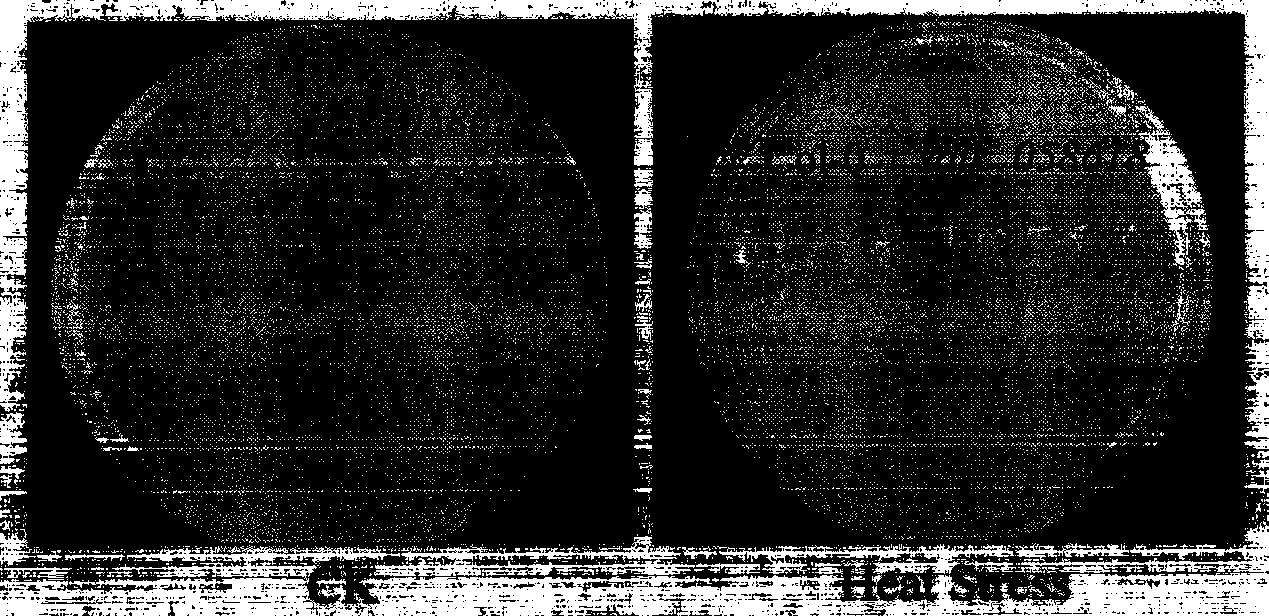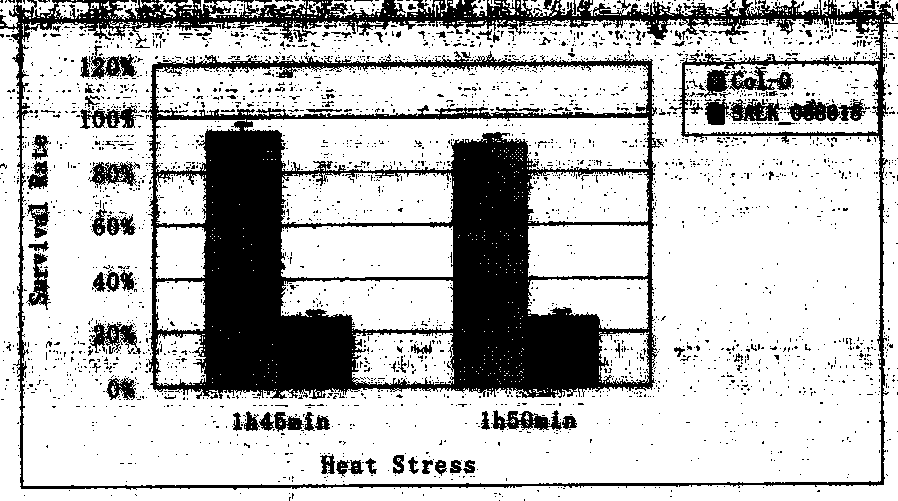Heat-shock transcription factor gene AtHSFA1d, and coding protein and application thereof
A heat-shock transcription factor and gene technology, applied in the fields of application, genetic engineering, plant genetic improvement, etc., can solve the problem of increased uncertainty in function and phenotype, increased difficulty of multi-gene transformation technology, and cumbersome new varieties of high-temperature resistant crops, etc. question
- Summary
- Abstract
- Description
- Claims
- Application Information
AI Technical Summary
Problems solved by technology
Method used
Image
Examples
Embodiment Construction
[0018] The present invention will be further described below in conjunction with experimental methods and data.
[0019] 1. Arabidopsis seedling culture:
[0020] Wild-type and mutant seeds were sterilized by soaking in 0.5% sodium hypochlorite solution for 10 min, and the sterilized seeds were placed in a 4°C refrigerator for vernalization for 2 days, and then spread on MS (Murashige and Skoog) solid medium containing 1% agar. Germinate and grow in a light incubator at 22°C.
[0021] 2. Homozygous mutant identification:
[0022] DNA extraction: All experimental drugs used were purchased from Zhongke Ruitai Bioengineering Co., Ltd. Take about 0.5g fresh leaves of Arabidopsis thaliana, grind them into a paste, add 400μl SDS extract (0.5% SDS (W / V); 200mM Tris-HCl, pH=8.0; 250mM NaCl; 25mM EDTA); centrifuge at 12,000r / min 3min; take the supernatant, add an equal volume of isopropanol to gently shake, let stand for 30min; centrifuge at 13,000r / min for 5min; discard the superna...
PUM
 Login to View More
Login to View More Abstract
Description
Claims
Application Information
 Login to View More
Login to View More - R&D
- Intellectual Property
- Life Sciences
- Materials
- Tech Scout
- Unparalleled Data Quality
- Higher Quality Content
- 60% Fewer Hallucinations
Browse by: Latest US Patents, China's latest patents, Technical Efficacy Thesaurus, Application Domain, Technology Topic, Popular Technical Reports.
© 2025 PatSnap. All rights reserved.Legal|Privacy policy|Modern Slavery Act Transparency Statement|Sitemap|About US| Contact US: help@patsnap.com



